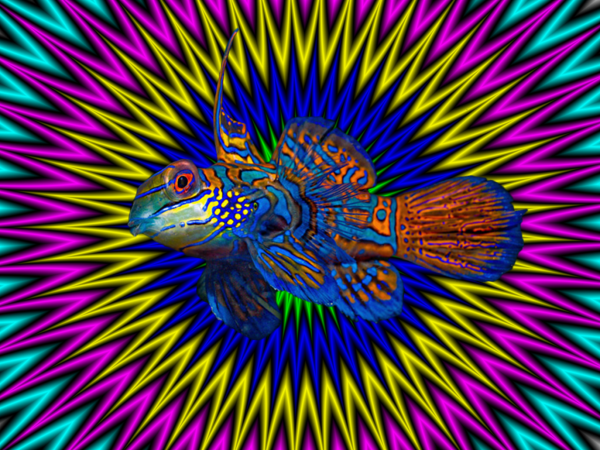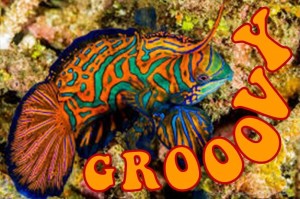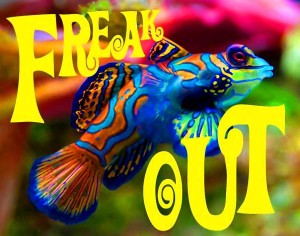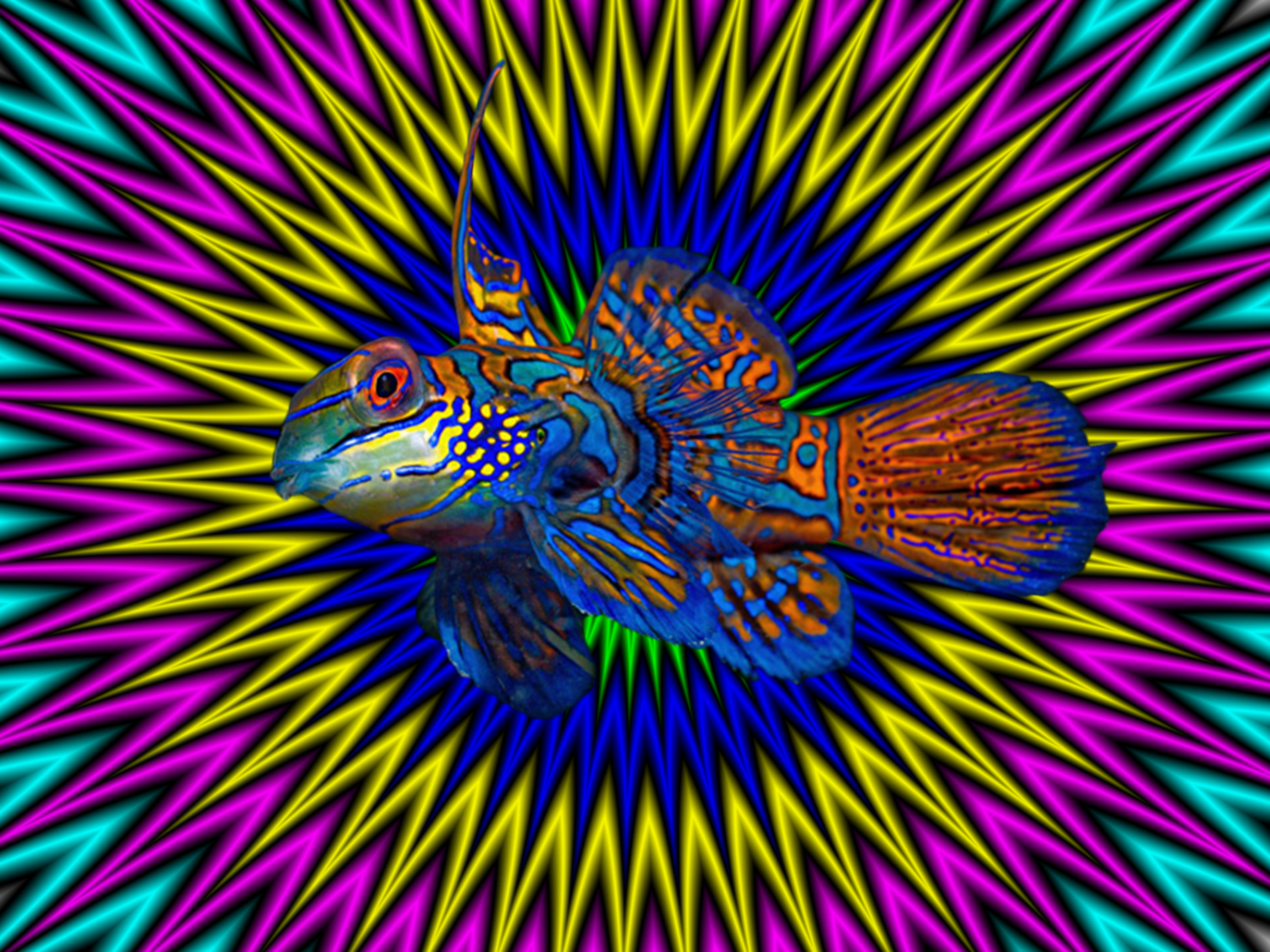 Coral reefs are synonymous with colorful fish, but in a world teeming with Technicolor extravagance, few fish can rival the psychedelic spectacle of the Mandarinfish. Named after the brightly-dyed silken robes of the imperial Chinese elite, these kaleidoscopic colors could be the swirling pattern of Grace Slick’s flowing dress at Woodstock, the pulsating rainbow light show at a Haight Street love-in, or the simulated acid freak-out in Peter Fonda’s The Trip. You can’t help but stare endlessly at them in an aquarium, an optical psych-out that’s
Coral reefs are synonymous with colorful fish, but in a world teeming with Technicolor extravagance, few fish can rival the psychedelic spectacle of the Mandarinfish. Named after the brightly-dyed silken robes of the imperial Chinese elite, these kaleidoscopic colors could be the swirling pattern of Grace Slick’s flowing dress at Woodstock, the pulsating rainbow light show at a Haight Street love-in, or the simulated acid freak-out in Peter Fonda’s The Trip. You can’t help but stare endlessly at them in an aquarium, an optical psych-out that’s  an ever-morphing underwater Lava Lamp. With waves, swirls, and spots of blues, greens, reds, oranges, yellows and purples, their scientific name, Synchiropus splendidus, lives up to their polychromatic excess. You don’t need a black light – or even LSD – to become one with these tie-dyed wonders.
an ever-morphing underwater Lava Lamp. With waves, swirls, and spots of blues, greens, reds, oranges, yellows and purples, their scientific name, Synchiropus splendidus, lives up to their polychromatic excess. You don’t need a black light – or even LSD – to become one with these tie-dyed wonders.
These groovy fish have been misnamed many things, including Mandarin Gobies and Mandarin Blennies, but they are in a group of small reef fishes called Dragonets, Latin for ‘little dragons’. Searching for their food of post-larval shrimp & gastropods, small amphipods & isopods, copepods, and small worms, they are always on the move, scooting over coral sands in shallower areas of western Pacific reefs, constantly pecking the substrate for their small prey.
 Bright colors can attract predators, but with bright colors often come anti-predator defenses like spines or toxins, but Mandarinfish lack these protections. A thick coating of slime can defend them from pathogens and dissuade smaller predators, but slime is no match for a large moray eel. But these bright colors are what promote their survival. Healthy males, ones who obtain a diverse diet, or fend off diseases, have the extra energy to produce these metabolically costly colors. Weaker males tend to produce less pigments and show duller colors. Males that spend time in the open, risking predation and signaling passing females, balance their own increased chance of mortality with their increased potential for breeding. Females will selectively mate with these brighter, showier, healthier males as a more fit partner to fertilize her eggs.
Bright colors can attract predators, but with bright colors often come anti-predator defenses like spines or toxins, but Mandarinfish lack these protections. A thick coating of slime can defend them from pathogens and dissuade smaller predators, but slime is no match for a large moray eel. But these bright colors are what promote their survival. Healthy males, ones who obtain a diverse diet, or fend off diseases, have the extra energy to produce these metabolically costly colors. Weaker males tend to produce less pigments and show duller colors. Males that spend time in the open, risking predation and signaling passing females, balance their own increased chance of mortality with their increased potential for breeding. Females will selectively mate with these brighter, showier, healthier males as a more fit partner to fertilize her eggs.
 But dig this – what makes Mandarinfish truly special is that their blue color comes from blue pigments in their skin, a rarity in the animal world. The color blue in most organisms is not a color at all, but are the visual effects of certain cellular structures that refract the blue spectrum of white light. True blue, man.
But dig this – what makes Mandarinfish truly special is that their blue color comes from blue pigments in their skin, a rarity in the animal world. The color blue in most organisms is not a color at all, but are the visual effects of certain cellular structures that refract the blue spectrum of white light. True blue, man.
Popular in the aquarium trade for their diverse, complex, and radiant colors, active behavior, and gentle demeanor, they are caught in the tens of thousands and exported through the worldwide aquarium trade. Most don’t survive for too long, with beginning aquarists providing the wrong type of food, or too little of it. Yet some professional private aquarists and public aquariums have successfully bred them in captivity. With these success are the hopes that a sustainable captive population will reduce the need for wild-caught Mandarinfish.







